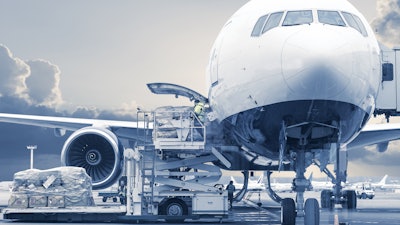
Air freight has always been a crucial part of global supply chains, but it was once reserved for urgent, high-value shipments. In the wake of the ongoing, pandemic-driven supply chain disruptions that impact transportation networks, companies have been turning to air freight to keep things moving, straining the already scarce capacity.
As the economy rebounds, it’s placing further constraints on the industry and the cargo transportation mix. Consumer demand is still strong, manufacturing is at an all-time high, and with ocean and land freight overwhelmed, the demand on air freight is likely to continue into 2023 – or beyond.
Russia-Ukraine Conflict
Supply chains have already been struggling with numerous obstacles, and the Russian invasion of Ukraine has had a detrimental impact on already weakened supply chains. Though it’s only been a few months, the invasion had a wide-reaching impact on several aspects of the supply chain. As suppliers of many essential goods and raw materials, such as titanium, neon gas, steel, aluminum, platinum, and sunflower oil, this disruption will exacerbate global vehicle and semiconductor chip shortages.
With both raw goods and crops in short supply, the prices will continue to rise. And the goods that can ship to other parts of the world will be at much higher costs, compounded with the high-fuel prices that have been affecting everyone, consumer and businesses alike.
To make matters worse, the invasion forced cargo airlines to divert flights over the region, further increasing the time and costs to transport goods from point A to point B. In addition, both Russia and Ukraine are home to fleets that specialize in extra-large cargo, neither of which are easily replaced. This is on top of the ongoing limited cargo space, due to many aircraft grounded from low passenger demand.
Considering all these factors, shipping rates may double or triple, leading more manufacturers to produce goods domestically to avoid the high costs of sourcing components and raw materials.
Scarce Air Cargo Capacity
Since the start of the pandemic, low air cargo capacity has been a major hindrance to supply chains. Both land and ocean cargo capacity were overwhelmed, highlighting a need for more air cargo. But along with that, the limitations on passenger travel in the wake of COVID-19 and the Omicron variant have had a detrimental impact on bellyhold cargo capacity. Fewer passenger airlines are operating, and by extension, not carrying as much cargo, placing new constraints on an already overwhelmed shipping option.
There are plenty of limitations to passenger freight as well. Most passenger belly capacity doesn’t serve key cargo trade routes, the schedules don’t often align with shipping needs, and not all cargo is appropriate for the payload range of passenger aircraft.
Rising Shipping Rates and Inflation
Shipping rates have been unstable since the start of the pandemic, compounded by the impact of the Russia-Ukraine conflict. The economic rebound and surging consumer demand, coupled with cargo space at a premium, only exacerbate the issue. In the wake of port congestion, truck driver shortages, and capacity issues with other transportation options, air freight is no longer reserved for urgent, high-value shipments.
But this comes at a cost for businesses and consumers.
Soaring shipping costs are a contributor to inflation as well, which is expected to build through the end of the year. When freight rates double, inflation increases about a 0.7 percentage point. This tends to peak after a year but may last up to 18 months. With this in mind, the increase in shipping costs that began in 2021 could increase inflation by about 1.5 percentage points in 2022. The Russia-Ukraine conflict will likely exacerbate global inflation further, the effects of which remain to be evaluated.
Furthermore, the Russia-Ukraine conflict is expected to cause greater disruptions to supply chains, which can keep global shipping costs, and the subsequent inflation effects, high for an extended period.
Managing Amid Volatility and Uncertainty
The multi-faceted and ongoing issues with the global supply chain are forcing shippers to get creative in their approach to keeping goods moving. This puts the need for supply chain diversification in sharp relief. Companies rely more on air freight in current demand. Regional air cargo is becoming a key established mode of shipping, especially with the seemingly never-ending growth of ecommerce.
Still, manufacturers should consider other options like freight forwarding and third-party logistics companies to ensure resilience in the face of shifting market conditions. For example, third-party logistics provider DB Schenker has established a network of 54 weekly charter cargo flights connecting Asia, America, and Europe, and it’s always seeking alternative airports for transport.
The COVID-19 pandemic brought unprecedented changes, challenges, and disruptions to just about everyone, including supply chains. Two years later, we’re still feeling the effects, on top of new disruptions with the Russia-Ukraine conflict, shortages, high costs and inflation. The demand for air freight is likely to continue throughout 2022 and into 2023.
David L. Buss is CEO of DB Schenker USA, a 150-year-old leading global freight forwarder and 3PL provider.






















